| __timestamp | International Business Machines Corporation | NXP Semiconductors N.V. |
|---|---|---|
| Wednesday, January 1, 2014 | 5437000000 | 763000000 |
| Thursday, January 1, 2015 | 5247000000 | 890000000 |
| Friday, January 1, 2016 | 5726000000 | 1560000000 |
| Sunday, January 1, 2017 | 5590000000 | 1554000000 |
| Monday, January 1, 2018 | 5379000000 | 1700000000 |
| Tuesday, January 1, 2019 | 5910000000 | 1643000000 |
| Wednesday, January 1, 2020 | 6262000000 | 1725000000 |
| Friday, January 1, 2021 | 6488000000 | 1936000000 |
| Saturday, January 1, 2022 | 6567000000 | 2148000000 |
| Sunday, January 1, 2023 | 6775000000 | 2418000000 |
| Monday, January 1, 2024 | 0 |
Unleashing insights
In the ever-evolving tech landscape, research and development (R&D) is the lifeblood of innovation. Over the past decade, International Business Machines Corporation (IBM) and NXP Semiconductors N.V. have demonstrated contrasting strategies in their R&D investments. IBM, a stalwart in the tech industry, has consistently allocated substantial resources, peaking at approximately $6.8 billion in 2023, marking a 25% increase since 2014. This commitment underscores IBM's focus on maintaining its competitive edge in a rapidly changing market.
Conversely, NXP Semiconductors, a leader in the semiconductor sector, has shown a remarkable growth trajectory in its R&D spending, with a 217% increase from 2014 to 2023, reaching around $2.4 billion. This surge highlights NXP's aggressive push towards innovation in semiconductor technology.
While IBM's R&D spending remains robust, NXP's rapid growth in investment reflects its strategic focus on capturing emerging opportunities in the semiconductor industry.
Comparing Revenue Performance: International Business Machines Corporation or NXP Semiconductors N.V.?
Cost of Revenue Comparison: International Business Machines Corporation vs NXP Semiconductors N.V.
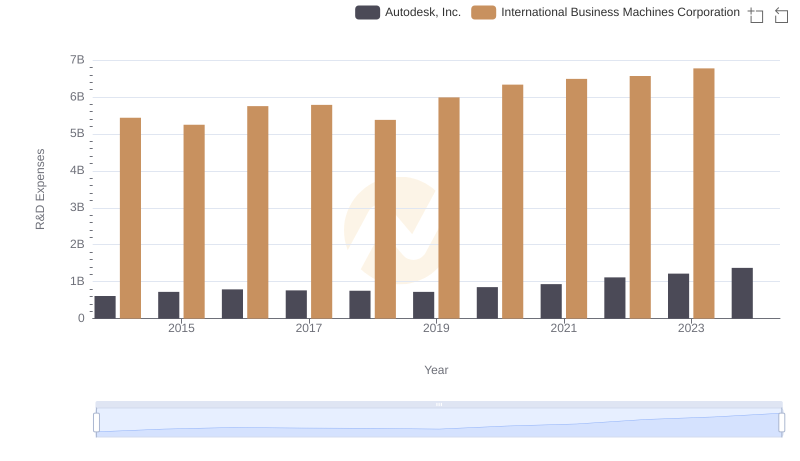
International Business Machines Corporation or Autodesk, Inc.: Who Invests More in Innovation?
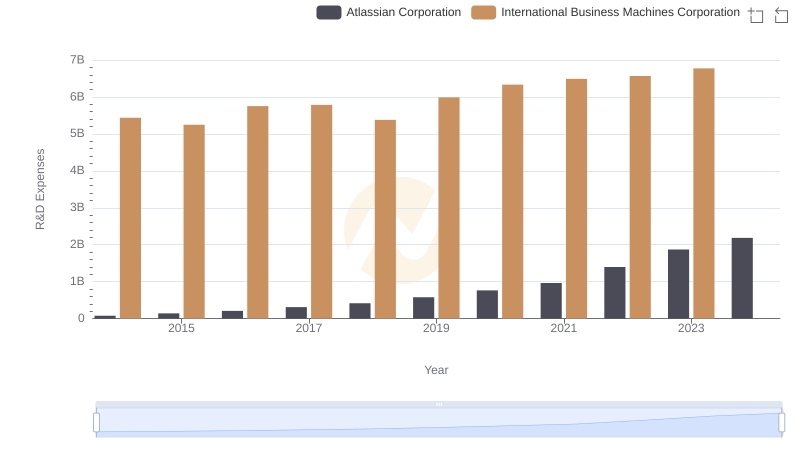
International Business Machines Corporation or Atlassian Corporation: Who Invests More in Innovation?
Gross Profit Comparison: International Business Machines Corporation and NXP Semiconductors N.V. Trends
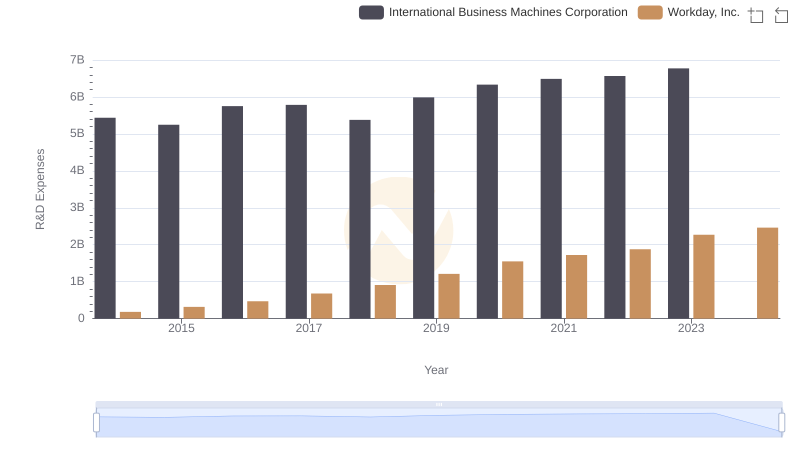
Research and Development Investment: International Business Machines Corporation vs Workday, Inc.
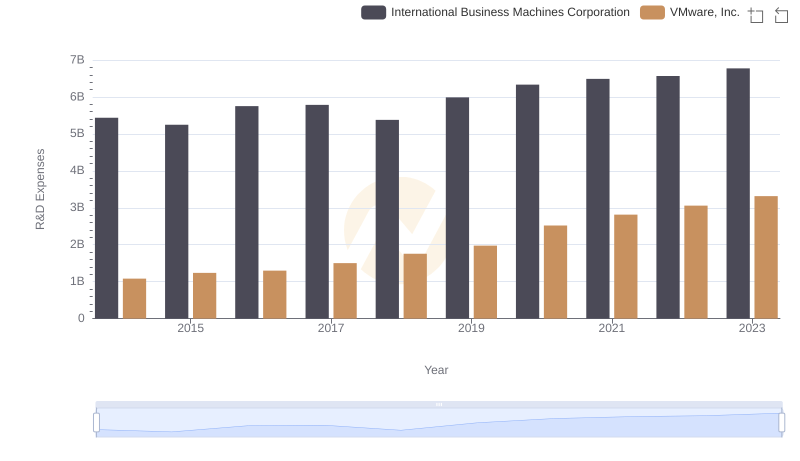
Research and Development: Comparing Key Metrics for International Business Machines Corporation and VMware, Inc.

Comparing Innovation Spending: International Business Machines Corporation and The Trade Desk, Inc.
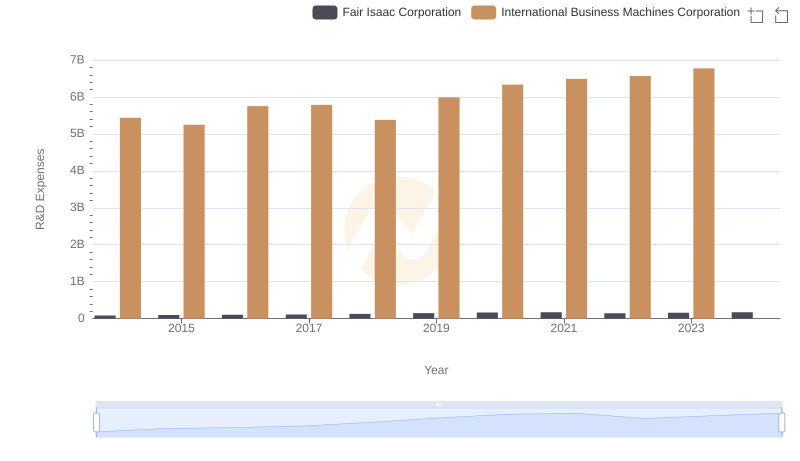
Who Prioritizes Innovation? R&D Spending Compared for International Business Machines Corporation and Fair Isaac Corporation
Selling, General, and Administrative Costs: International Business Machines Corporation vs NXP Semiconductors N.V.
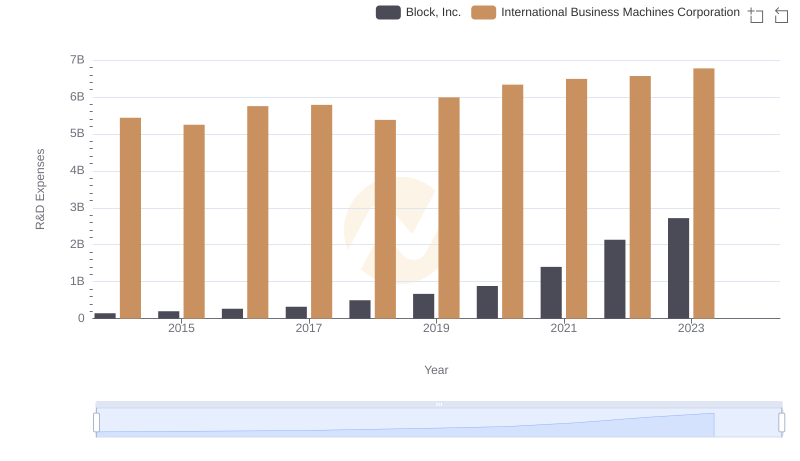
International Business Machines Corporation vs Block, Inc.: Strategic Focus on R&D Spending
International Business Machines Corporation and NXP Semiconductors N.V.: A Detailed Examination of EBITDA Performance